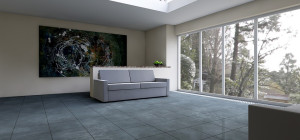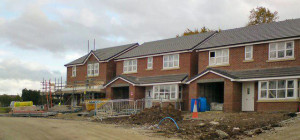 Over the years, 3D printing has cooked up quite the storm. With newer developments aiding the growth of this innovative technology, integration of 3D printing in various industries has turned out to be quite common. Many industries have started realizing the immense potential that 3D printing holds.
Over the years, 3D printing has cooked up quite the storm. With newer developments aiding the growth of this innovative technology, integration of 3D printing in various industries has turned out to be quite common. Many industries have started realizing the immense potential that 3D printing holds.
Owing to 3D printing’s ability to produce physical objects from digital data, the real estate industry has a lot to benefit from this. From engineering to design, the applications of this form of additive manufacturing is all set to transform commercial as well as residential real estate.
Here’s how.
Printing Entire Buildings at Low Costs
The advancement of 3D printing has reached such an elevated level that entire houses can be printed out in unbelievable durations.
For example, a Shanghai-based company, Win Sun printed 10 houses in 24 hours in China. In addition to that, it has also printed a five-storey apartment building and an 1100 square metre villa that is complete with decorative elements both, inside and out. The efficiency of this method lies in the following facts:
- saves 30 – 60% of construction waste
- decreases production times by 50 – 70%
- labour cost is reduced by 50 – 80%
Dubai has recently erected the world’s first functional 3D printed building. It is complete with electricity, phone hookups, water and air conditioning. Mohamed Al Gergawi, minister of cabinet affairs of the United Arab emirates has confirmed that this building cost 50% less than constructing it in a traditional way. He pointed out, “It’s not just a building, it has fully functional offices and staff. We believe this is just the beginning. The world will change.”
3D Prototyping
One of the most common ways that 3D printing has been used in the real estate industry is through prototyping. 3D printed models of buildings make for a simple yet effective way for showcasing how the final buildings will look like from all angles. Such method of 3D property viewing increases the transparency for consumers. This paves the way for a more efficient real estate marketing strategy.
3D prototyping provides a chance for the customers to include customisations that they require in their houses. In addition to that, it also allows designers to find out possible faults that may arise in the building way before initiating the process of constructing it. As a result, these faults being rectified at an early stage can reduce expenses further down the line.
Increased Reach of Real Estate in Remote Locations
Construction of buildings the conventional way requires the transport of a lot of heavy materials like cement, bricks, beams and so on. It can quite difficult to keep up the supply in remote regions. 3D printing eliminates this process entirely.
With 3D printing facilitating production of buildings onsite, it will expand the reach of real estate in remote locations as well. Additionally, the process is fast too. Therefore, building emergency housing in areas affected by natural disasters will no longer be difficult.
Eco-Friendly and Elaborate Designs
3D printing supports the utilisation of recycled products to create intricate and elaborate designs for building purposes. Production of such complex designs with extreme accuracy and precision in the minimum amount of time has been made achievable by the 3D printing technology.
Most of the materials used for 3D printing purposes are highly eco-friendly and reduce production of waste by a large amount. A notable material that has gained momentum recently is ‘reversible concrete‘. MIT and Gramazio Kohler Research of ETH Zurich have recently shown off the wonder of reversible concrete by creating a 13-foot tall column made with the material at the Chicago Architecture Biennial. The process involves binding rocks by an algorithmically placed string into whatever shape is required.
According to installation project lead, Andreas Thoma of Gramazio Kohler Research, “The ability to digitally fabricate, disassemble, and reassemble structures with no material losses changes the paradigm of architecture as well as the view of permanent / temporary architect.”
In addition to these, 3D printing will also create newer opportunities for employment. This technology holds massive potential to revolutionize the entire real estate industry. Considering the rapid pace at which it is growing, it will only take a few years to transform lives for the better.
Information shared by iCreate Ltd







